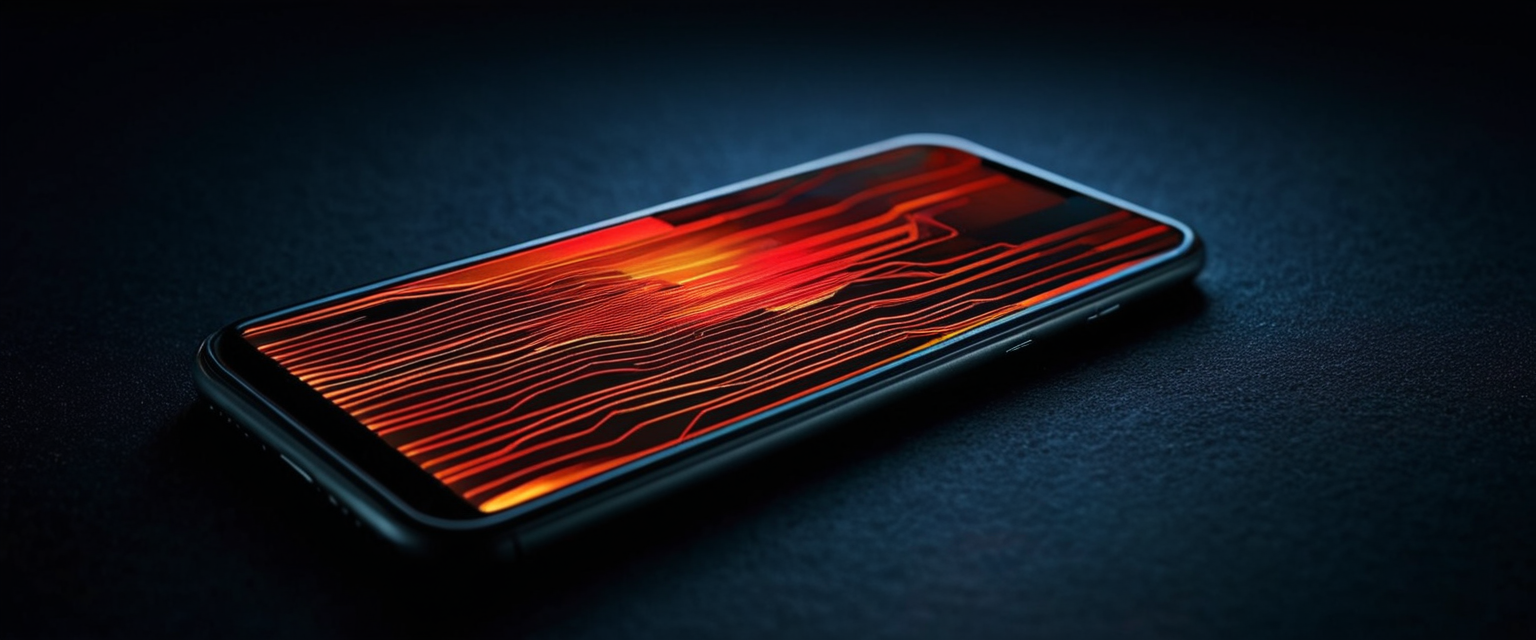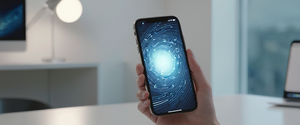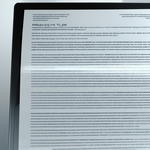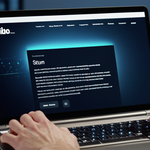
The question of whether iPhones can contract malware represents one of the most significant and frequently misunderstood aspects of mobile device security in contemporary digital environments. While Apple has cultivated a reputation for security robustness through its closed ecosystem and restrictive architecture, the reality presents a far more nuanced picture than the popular assertion that iPhones are impervious to malicious software. Recent security incidents, sophisticated zero-click exploits, and the emergence of state-sponsored mercenary spyware targeting high-profile individuals have definitively demonstrated that iPhones can indeed be compromised by various forms of malware. Although traditional self-replicating viruses remain exceptionally rare on iOS devices, malware in broader categorical forms—including spyware, trojans, adware, ransomware, and stalkerware—pose genuine and evolving threats to iPhone security. Understanding the nuanced distinction between theoretical impossibility and practical rarity is essential for developing appropriate threat awareness and implementing effective defensive measures on Apple’s mobile platform.
The Apple iPhone Security Architecture: Built-In Protections and Fundamental Design Principles
Apple has engineered the iPhone with multiple overlapping security layers designed to create what many experts describe as one of the most secure consumer electronics ecosystems available today. At the foundational level of this security architecture lies a comprehensive system of technical controls that dramatically reduce the attack surface available to potential adversaries. To fully comprehend why malware threats exist despite these robust protections, it becomes necessary to examine both the strengths and inherent limitations of Apple’s security model in detail.
Sandboxing and Application Isolation
The sandboxing mechanism represents perhaps the most critical component of iPhone security architecture, and understanding its function provides essential context for comprehending why iPhones remain vulnerable to certain malware despite this protection. Every third-party application running on an iPhone operates within its own isolated virtual space, completely segregated from other applications and from the core iOS operating system itself. This fundamental design principle means that each application receives a unique home directory for storing its data, which is randomly assigned at installation time. If a third-party application requires access to information beyond its own sandboxed environment—such as contact data, photos, location information, or calendar entries—it must explicitly request user permission and utilize only the services explicitly provided by iOS for such cross-application access.
This architectural approach creates profound implications for malware propagation. Traditional computer viruses, which historically spread by infecting other files and corrupting data across entire systems, cannot effectively replicate across an iPhone’s sandboxed application landscape. The sandboxing mechanism effectively creates a digital firewall preventing infected applications from accessing the core iOS operating system files or even from accessing data belonging to other installed applications. However, this protection, while extraordinarily effective against traditional virus propagation, does not provide equivalent defense against other categories of malware that do not depend on horizontal propagation. Sophisticated spyware or trojans, which function through targeted information exfiltration rather than self-replicating infection, can operate effectively within a single sandboxed application if they successfully compromise that application or if they have been deployed through other infection vectors.
The Secure Enclave and Hardware-Level Protections
Beyond the application layer, Apple integrates hardware-level security mechanisms that protect the most sensitive biometric and authentication data on the device. The Secure Enclave represents a dedicated secure subsystem existing as a separate, fortified processor within Apple devices, physically isolated from the main processor and operating system. This specialized hardware component stores and manages the encryption keys and biometric templates associated with Face ID and Touch ID functionality, maintaining absolute segregation from any application-level code or potential malware. Even if an attacker successfully compromises the main operating system or gains administrative-level access to the device, the Secure Enclave’s physical isolation and cryptographic protections prevent direct access to these sensitive authentication credentials.
Additionally, Apple implements Address Space Layout Randomization (ASLR) technology that randomizes memory addresses throughout the device at each system launch, making it substantially more difficult for attackers to exploit memory corruption vulnerabilities through techniques such as return-to-libc attacks. The iOS kernel marks memory pages as nonexecutable through ARM’s Execute Never (XN) feature, preventing executable code from running in memory regions designated as data. These complementary hardware and operating system level protections collectively create a hostile environment for traditional exploitation techniques commonly employed in computer malware attacks.
App Store Review and Vetting Processes
Apple maintains direct control over the distribution of all applications available to iPhone users through the official Apple App Store, a centralized marketplace where every single application and each subsequent application update undergoes comprehensive security review before becoming available to consumers. This review process includes both automated malware scanning for known threats and human expert review examining application functionality, privacy practices, and adherence to Apple’s stringent security guidelines. The App Store’s human review component represents a substantial deterrent to malicious developers, as hiding malicious functionality within an application sufficient to deceive both automated scanning systems and expert human reviewers requires significant technical sophistication.
The review process, while not perfect, has proven effective in preventing widespread distribution of malware through the official channel. When malicious or problematic applications do occasionally slip through the review process, Apple maintains the capability to rapidly identify and remove them from the App Store and to notify users who previously downloaded the compromised applications. This rapid removal capability limits the window during which malware distributed through the App Store can cause damage at scale. However, the review process faces inherent limitations when evaluating applications containing sophisticated malicious functionality that remains dormant or hidden until after the application has been approved and distributed, or when applications are later compromised through supply chain attacks targeting legitimate developers.
The Landscape of iPhone Malware Threats: Categories and Characteristics
Despite the architectural protections described above, the reality of contemporary iPhone security encompasses several distinct categories of malicious software that can compromise device functionality and user privacy. Understanding the characteristics of these different malware categories is essential for evaluating realistic threat levels and developing appropriate defensive strategies.
Spyware and Sophisticated Surveillance Tools
Spyware represents arguably the most significant category of malware threatening iPhone users in contemporary threat environments, particularly distinguishing itself from traditional viruses through its methods and objectives rather than through fundamental technological capabilities. Unlike viruses that prioritize self-replication and system propagation, spyware focuses on covert information exfiltration—gathering sensitive data including text messages, call logs, location information, photos, passwords, and communications across various applications. Spyware can function effectively within the constraints of iOS sandboxing if it achieves installation through other mechanisms or if the application containing spyware is itself granted legitimate permissions to access the targeted information categories.
The most notorious contemporary example of sophisticated iPhone spyware is Pegasus, developed by the Israeli cyber-arms company NSO Group and marketed ostensibly for law enforcement and counter-terrorism purposes. Pegasus represents a qualitative advancement in mobile spyware sophistication, capable of being installed covertly through multiple infection vectors and utilizing sophisticated zero-click exploits that require no user interaction whatsoever. As of September 2023, Pegasus operators possessed the capability to remotely install the spyware on iOS versions through 16.6 using zero-click exploits, though Apple’s continuous patching has progressively limited these attack vectors. The spyware’s functional capabilities encompass reading text messages, conducting call snooping, collecting passwords, tracking location in real-time, accessing the target device’s microphone and camera for audio and video surveillance, and harvesting information from applications including iMessage, WhatsApp, Telegram, Gmail, Facebook, and Viber.
A particularly significant aspect of Pegasus’s operational model involves its reliance on multiple infection vectors rather than dependence on a single vulnerability. Infection vectors documented in technical analyses include clicking malicious links, exploitation of vulnerabilities in the Photos application, exploitation of vulnerabilities in Apple Music, and most critically, zero-click iMessage exploits. The zero-click capabilities represent an especially troubling threat category because they eliminate the requirement for user interaction entirely—a device can become infected through receiving a specially crafted message without the recipient clicking any link, opening any attachment, or taking any deliberate action whatsoever.
Trojans and Data Theft Malware
Trojan malware on iPhones typically manifests as deceptive applications that appear to offer legitimate functionality while secretly performing unauthorized operations. Named metaphorically after the legendary Trojan horse, these programs gain access through social engineering and misrepresentation rather than through exploiting system vulnerabilities. Once installed, trojans can execute an extensive array of malicious activities including data theft of banking credentials and payment information, remote control allowing attackers to access files and device settings without the owner’s knowledge, activation of cameras and microphones for covert surveillance, enrollment of the device into botnets for participation in distributed denial-of-service attacks, and delivery of ransomware payloads that encrypt files and demand payment for decryption.
The particular danger of trojan malware in the iPhone context stems from the difficulty users face in distinguishing malicious applications from legitimate ones at the point of installation. While the App Store review process creates a high barrier against obvious malware, attackers can potentially employ deceptive naming, misleading descriptions, fabricated positive reviews through coordinated manipulation, and gradual activation of malicious functionality after the application has gained user trust and widespread installation.
Adware, Phishing, and Social Engineering Threats
Beyond sophisticated spyware and trojans, iPhone users face persistent threats from less technically complex but highly effective malware categories. Adware embeds itself within devices and collects user data including browsing habits to facilitate targeted advertising, subsequently bombarding user screens with intrusive pop-up advertisements with alarming frequency. While adware rarely causes catastrophic device compromise, it significantly degrades user experience and violates privacy through unauthorized data collection.
Phishing represents perhaps the most widespread malware-adjacent threat affecting iPhone users, though it operates through social engineering exploitation of user psychology rather than through software vulnerabilities. Phishing attacks typically arrive as deceptive emails or messages that appear to originate from legitimate institutions, containing links that direct users to fraudulent websites mimicking legitimate services. Users who enter credentials on these fraudulent websites directly surrender their authentication credentials to attackers, who subsequently gain unauthorized access to financial accounts, email accounts, and Apple IDs. Smishing represents a variant of phishing employing text messages rather than email as the delivery vector, often disguising malicious links within SMS messages that appear to originate from banks, delivery services, or other trusted sources.
Stalkerware, also termed spouseware, represents a particularly insidious category of malware deployed to monitor individuals without their knowledge or consent, most frequently in domestic abuse contexts. These applications can collect phone calls, location data, messages, photographs, videos, and comprehensive surveillance of device activity. The malicious deployment of stalkerware frequently occurs through physical access to devices rather than through remote infection, with abusers installing the software during moments when they have control over the victim’s phone.
Real-World Cases and Recent Attacks: Contemporary Threat Demonstrations
The theoretical possibility of iPhone malware infection has been dramatically demonstrated by numerous documented real-world attacks and security incidents in recent years, providing empirical validation that the threat landscape extends well beyond academic discussion into practical operational reality.
Operation Triangulation: A Paradigm Shift in iOS Attack Complexity
Operation Triangulation represents perhaps the most technically sophisticated and complex attack campaign ever documented against iOS devices, fundamentally demonstrating the capabilities available to well-resourced state actors targeting Apple’s platform. This campaign, first disclosed in June 2023, employed a chain of four zero-day vulnerabilities coordinated into an exceptionally complex 14-step infection process that targeted iOS devices through invisible iMessage attachments. The sophistication of Operation Triangulation‘s technical approach exceeds all previously documented iOS attacks, utilizing undocumented hardware features of Apple processors to bypass memory protections that defend against exploitation of more conventional vulnerabilities.
The infection mechanism began with delivery of specially crafted iMessage attachments that remained completely invisible to users—no notification appeared, no user interaction was required, and the malicious message self-deleted after infection. The initial compromise exploited CVE-2023-41990, CVE-2023-32434, and CVE-2023-38606 zero-day vulnerabilities in sequence, with the infection chain downloading additional components from attacker-controlled servers. Most remarkably, the exploitation of CVE-2023-38606 within the kernel employed undocumented MMIO registers that permitted writing to hardware-protected areas of kernel memory—functionality that security researchers suggested was likely designed by Apple for processor debugging but had been discovered and weaponized by attackers. After establishing root-level access, the malware deployed the TriangleDB implant, which could upload files from the device, extract data from the iOS keychain, track geolocation, modify files and processes, and through modular additional downloads, perform prolonged microphone recording and exfiltrate communications from WhatsApp and Telegram.
The victims of Operation Triangulation numbered in the thousands and included commercial, governmental, and diplomatic organizations primarily in Russia and Russian overseas missions. The attacks demonstrated conclusively that determined and well-resourced adversaries could achieve nearly complete compromise of iOS devices through the exploitation of multiple zero-day vulnerabilities, with the infection process leaving minimal forensic traces and the malware existing purely within device memory to evade detection across reboots.
Pegasus Spyware and Targeted Surveillance Campaigns
While Operation Triangulation represents the most technically complex iOS attack documented, Pegasus spyware has affected vastly larger numbers of targets across broader geographic distribution, representing a sustained multi-year threat campaign targeting journalists, human rights activists, political dissidents, and diplomats across more than 150 countries globally. The Pegasus Project investigation, coordinated by Amnesty International and multiple international media organizations and released in July 2021, centered on a leaked database containing approximately 50,000 phone numbers reportedly targeted by Pegasus customers—predominantly governments purchasing the spyware for surveillance operations.
Pegasus has demonstrated continuous technical evolution, with infection vectors advancing from the requirement of user interaction in early iterations to sophisticated zero-click exploits through iMessage and other applications in contemporary versions. The spyware’s operational history spans multiple years, with evidence of active exploitation documented as far back as January 2018, though the spyware’s existence remained publicly unknown until August 2016 when researchers at Citizen Lab and Lookout Security published the first technical analyses after capturing the spyware in a failed attempt to compromise a human rights activist’s device. By 2019, Pegasus had shifted toward exploiting vulnerabilities within WhatsApp, using a vulnerability in the application’s calling functionality to install spyware through calls that did not require the target to answer. Subsequent technical evolution proceeded toward pure zero-click exploits and network-based attacks, with by 2020 Pegasus predominantly relying on iMessage vulnerabilities for device compromise.

Zero-Click Vulnerabilities and Recent Security Patches
The year 2025 has witnessed multiple emergency security patches from Apple addressing actively exploited zero-day vulnerabilities, demonstrating the continued reality and urgency of sophisticated iPhone threats even as Apple’s security infrastructure has matured substantially. In November 2025 alone, Apple released patches addressing nearly 50 security flaws across iPhones, iPads, Macs, and related devices, with two particularly notable vulnerabilities standing out as especially significant. CVE-2025-43442 represents a permission issue allowing malicious applications to identify which other applications a user has installed—information that could be weaponized by banking trojans to optimize their social engineering strategies by targeting users who maintain particular financial applications or cryptocurrency wallets. CVE-2025-43455 constitutes a privacy vulnerability in watchOS, visionOS, iOS, and iPadOS allowing malicious applications to capture screenshots of sensitive information in embedded views without explicit user permission.
More notably, a zero-click vulnerability in Apple’s Messages application, tracked as CVE-2025-43200 with a CVSS severity score of 7.8, enabled attackers to compromise devices through sending specially crafted photographs or videos via iCloud links. The vulnerability triggered logic flaws in the Messages application’s processing of media files, enabling the installation of Graphite spyware developed by Paragon, an Israeli surveillance firm, on journalist and civil society member devices without any user interaction whatsoever. The exploitation pattern demonstrated the continued ability of sophisticated threat actors to achieve device compromise through zero-click vectors despite Apple’s continuous security improvements.
Infection Vectors and Attack Methods: How Malware Reaches iPhones
Understanding the multiple pathways through which malware can successfully install and operate on iPhones provides critical context for developing effective preventive strategies and recognizing potential compromise indicators.
Jailbreaking: Deliberate Removal of Security Restrictions
Jailbreaking represents the most straightforward method by which iPhone security architecture can be deliberately circumvented, and it merits extensive discussion because it fundamentally alters the device’s threat landscape. The practice of jailbreaking involves exploiting vulnerabilities or deliberately modifying iOS to gain administrative-level access to the device’s operating system, bypassing Apple’s intentional security restrictions. Users typically pursue jailbreaking to access applications unavailable through the official App Store, customize device appearance and functionality beyond Apple’s permitted parameters, remove carrier restrictions, or access features they perceive as unnecessarily restricted by Apple’s security model.
The security implications of jailbreaking are severe and multifaceted. By removing the security layers that Apple has engineered into iOS, jailbroken devices lose access to the sandboxing protections that prevent applications from accessing one another’s data or modifying the operating system. Jailbroken devices no longer receive automatic security updates from Apple, instead requiring updates through jailbreak-specific tools that often lag behind Apple’s official releases by weeks or months. The delay in receiving security patches leaves jailbroken devices vulnerable to known exploits that have already been patched on standard iOS devices. Furthermore, the applications available through third-party app stores used by jailbroken devices undergo minimal or no security review, with Cydia historically serving as the primary third-party app store for jailbroken iOS devices.
Evidence of the dramatically increased malware risk on jailbroken devices appears in documented incidents including the 2015 compromise of approximately 225,000 Apple IDs through KeyRaider malware targeting jailbroken iOS devices, and the discovery of “Unflod Baby Panda” malware specifically targeting jailbroken iPhones with capability to steal account credentials. Research by Zimperium indicates that rooted Android devices—the functional equivalent to jailbroken iPhones—are more than 3.5 times more likely to be targeted by mobile malware compared to standard devices. By deliberately removing Apple’s security architecture through jailbreaking, users exponentially increase their vulnerability to all categories of malware that the standard iPhone security model was engineered to prevent.
Phishing, Social Engineering, and Configuration Profiles
Phishing attacks exploit user psychology rather than technological vulnerabilities, manipulating targets into voluntarily providing sensitive credentials or installing malicious content. The effectiveness of phishing as a malware delivery vector remains undiminished despite decades of security awareness efforts, with research indicating that a meaningful fraction of users continue to fall victim to SMS phishing attempts. Attackers conducting phishing campaigns impersonate legitimate institutions, often incorporating stolen personal information to establish credibility and urgency, directing users to counterfeit websites where they enter credentials or installing malicious configuration profiles.
Configuration profiles represent a particularly insidious attack vector because they permit installation of system-level settings that persist on devices with exceptional difficulty for users to remove once installed. Configuration profiles can configure devices to use malicious VPN services that intercept all network traffic, install fraudulent root certificates enabling man-in-the-middle attacks where the attacker impersonates secure websites, restrict passcode requirements, or redirect network traffic to attacker-controlled servers. A user who installs a configuration profile containing a malicious VPN and fraudulent certificate authority effectively grants the attacker permanent visibility into all encrypted communications transmitted from the device. The profile persists even after attempting to delete it, with settings remaining applied until the profile is explicitly removed through the Settings application’s VPN & Device Management section.
The attack flow typically begins with phishing communications directing users to download configuration profiles by falsely claiming the profile solves security issues or unlocks valuable content, or through malicious websites or compromised applications that directly serve configuration profile installation prompts. Once installed, the profile operates with system-level privileges that constrain subsequent security measures, preventing users from easily removing it while allowing attackers to redirect traffic, monitor data transmission, or implement additional attack stages.
Supply Chain Compromise and Malicious Applications
Despite Apple’s comprehensive App Store review process, malware occasionally reaches devices through applications that pass initial review by concealing malicious functionality or applications that were legitimate at the time of approval but are subsequently compromised through unauthorized modification by attackers who gain access to developer accounts or modify application servers. The challenge in preventing this category of attack stems from the inherent difficulty in detecting sophisticated malicious functionality during the review process, particularly when functionality is designed to remain dormant until activated through remote commands after widespread distribution.
Documentation of real-world incidents includes cases where hackers gained unauthorized access to legitimate developer accounts and published updated versions of previously benign applications containing hidden malicious code. Users updating to these compromised versions unknowingly installed malware that passed through Apple’s review because the applications maintained external appearance of legitimacy. Additionally, research has documented situations where developers of ostensibly legitimate applications contain malicious code that remains inactive during testing phases but activates after distribution, exploiting the challenge App Review faces in exhaustively testing all potential application behaviors during limited review windows.
Zero-Click Exploits and Message-Based Infection
Among the most sophisticated and dangerous infection vectors for iPhones are zero-click exploits that achieve device compromise through receipt of specially crafted messages, media files, or network traffic without requiring any user interaction whatsoever. These attacks represent a fundamental escalation in threat sophistication because they eliminate the user education component that defenders traditionally relied upon—users cannot avoid clicking suspicious links or opening dangerous attachments if no user action is involved in the infection process.
CVE-2025-43300 affecting the Image I/O framework that handles image file processing represented a particularly dangerous zero-click vector. Because the Image I/O framework is invoked automatically by multiple applications including Messages, Mail, Photos, Safari, and numerous third-party applications when processing image files, exploitation of this vulnerability could occur through passive receipt of messages containing malicious images. The out-of-bounds write vulnerability within Image I/O enabled attackers to manipulate memory regions that should have been inaccessible, causing memory corruption that could lead to arbitrary code execution with elevated privileges. Complementing the Apple Image I/O vulnerability, researchers documented zero-click attacks combining CVE-2025-43300 with a WhatsApp vulnerability (CVE-2025-55177) enabling unauthorized processing of content from arbitrary URLs, creating a powerful exploit chain sufficient to compromise devices without any user action.
Vulnerability Factors and Risk Groups: Who Faces Greater Threats
While all iPhone users potentially face malware threats, the probability and severity of actual compromise vary dramatically based on multiple risk factors including device configuration choices, behavioral patterns, professional roles, and targeted threat status.
The Impact of User Behavior and Risk Factors
Despite Apple’s engineered security protections, human behavior remains a critical vulnerability factor determining actual malware infection rates. Research conducted by Malwarebytes analyzing survey data from 1,300 users across the United States, United Kingdom, Austria, Germany, and Switzerland revealed striking behavioral differences between iPhone and Android users with direct implications for malware vulnerability. iPhone users demonstrated substantially greater willingness to engage in risky online behaviors compared to Android counterparts—47 percent of iPhone users purchased items from unknown sources based primarily on price, compared to 40 percent of Android users. Similarly, 41 percent of iPhone users sent direct messages to company accounts seeking discounts, compared to 33 percent of Android users.
Critically, iPhone users reported substantially lower adoption of security protective measures, with only 21 percent of iPhone users employing security software on their devices compared to 29 percent of Android users, and only 35 percent of iPhone users employing unique passwords for online accounts compared to 41 percent of Android users. These behavioral patterns directly correlated with elevated victimization rates, with 53 percent of iPhone users reporting falling victim to scams compared to 48 percent of Android users. The underlying cause appears rooted in differential trust in platform security: 55 percent of iPhone users agreed with the statement “I trust the security measures on my mobile phone to keep me safe,” compared to 50 percent of Android users. This elevated trust in platform security potentially creates psychological false confidence that reduces user vigilance regarding personal security practices.
Targeted Individuals and Mercenary Spyware
While the average iPhone user faces relatively modest malware risks from commodity malware and phishing attacks, individuals targeted by well-resourced state actors or private surveillance firms face dramatically elevated threat levels from sophisticated mercenary spyware such as Pegasus. Journalists, human rights activists, political dissidents, and diplomats have been documented as primary targets for sophisticated surveillance tools. The expense and sophistication required to develop and deploy tools like Pegasus—estimated to cost millions of dollars in development and licensing costs—means that attacks remain targeted toward high-value objectives rather than attempting mass compromise.
Apple maintains specialized threat notification procedures specifically for individuals targeted by mercenary spyware, recognizing that such attacks represent qualitatively different threats than commodity malware. Threat notifications appear on account.apple.com when signing into an Apple Account if Apple’s internal threat intelligence systems detect activity consistent with mercenary spyware attacks. These notifications, while providing no tactical information about the specific attack methodology to prevent compromising Apple’s detection capabilities, inform targeted individuals that they may have been individually selected for sophisticated attack and should consider implementing additional security measures.
Apple has further developed Lockdown Mode—an extreme protection feature designed specifically for individuals facing such sophisticated threats. When Lockdown Mode is enabled, the iPhone undergoes substantial functional restrictions reducing the attack surface available to sophisticated exploits, including blocking most message attachment types except certain images and audio, disabling complex web technologies that might be exploited for attacks, blocking incoming FaceTime calls from non-contacts, and preventing connection with accessories unless the device is unlocked. While Lockdown Mode creates substantial friction in normal device use, it provides defense against the most sophisticated threats for individuals who determine that such protection justifies the functional restrictions.
Carrier Account Vulnerability and SIM Swap Attacks
A particularly concerning attack vector operates against the carrier level rather than against iOS directly—SIM swap attacks or port-out scams wherein attackers manipulate mobile carriers into transferring a target’s phone number to a SIM card or eSIM device under attacker control. Once attackers control the phone number, all incoming text messages and phone calls route to their devices, enabling them to receive one-time verification codes used to authenticate account access. Attackers then utilize these codes to reset passwords on financial accounts, email accounts, and other critical services. The carrier vulnerability exists independent of iPhone security—even if the iPhone itself remains secure, loss of control over the phone number enables account compromise.
Evidence of SIM swap attacks includes cases involving criminal actors approaching cellular carrier employees via text message offering payment of up to $300 for assistance with SIM swaps, and the FCC reporting that attackers have filed emergency disclosure requests to obtain personal information sufficient to pass identity verification checks. Additionally, researchers from Princeton demonstrated that some wireless carriers employ less secure authentication methods including security questions, payment history verification, and device information checks that enable motivated attackers to impersonate legitimate account holders. A 2025 incident involved an Australian salon owner whose four iPhones were fraudulently purchased under her account after attackers changed account contact details and bypassed fraud detection systems.
Detection Methods and Indicators: Recognizing Compromised Devices
While sophisticated malware like Pegasus and Operation Triangulation’s TriangleDB implant are specifically engineered to operate with minimal detection indicators, iPhone users can monitor their devices for behavioral changes suggestive of compromise or less sophisticated malware infection.

Observable Behavioral Indicators
Sudden battery drain represents among the most common indicators of malware infection, as background malware operation consumes substantial computational resources and power. Battery drain disproportionate to measured usage patterns, particularly when the device remains relatively idle, suggests background processes consuming power. Examining Settings > Battery usage to identify applications consuming unusual amounts of power can reveal suspicious patterns.
Unexpected increases in cellular data usage appear frequently in malware infection cases, as malware typically must transmit exfiltrated data to attacker-controlled servers. Users who notice sudden spikes in data consumption despite maintaining consistent usage patterns should investigate whether particular applications or background processes account for the increased usage. Similarly, overheating of the device while idle or during minimal usage suggests excessive computational activity, potentially indicating malware operation.
Constant unsolicited pop-up advertisements—particularly advertising that appears across multiple applications rather than within specific applications—suggests adware infection that has compromised the system-level advertising capabilities. While occasional pop-up advertisements represent normal browsing experiences, alarming frequency or system-wide pop-up appearance across applications that should not generate advertisements indicates adware contamination. Sluggish device performance, unexpected application crashes, freezing behavior, and system responsiveness degradation can indicate malware consuming resources or interfering with normal system operation.
More subtle indicators include the device persistently failing to lock despite manual attempts to lock it, random vibrations without corresponding notifications, unexpected appearance of icons on home screens indicating applications the user does not remember installing, and abnormal battery drain patterns after recent iOS updates. Additionally, the camera or microphone unexpectedly activating—indicated by green or orange status indicator dots appearing in the status bar—suggests malware attempting to access audio or video capture.
Advanced Detection Techniques
For users suspecting sophisticated malware infection or spyware deployment, Apple provides built-in tools for investigating permission access patterns. The App Privacy Report accessible through Settings > Privacy & Security > App Privacy Report records information about which applications accessed specific sensors (camera, microphone, location), which domains applications contacted, and when such access occurred. Users who review this report and identify applications accessing camera, microphone, or location services without legitimate functional requirements should investigate whether such access was intentional or represents unauthorized access.
Configuration profile inspection through Settings > General > VPN & Device Management provides visibility into any profiles the user did not deliberately install. The presence of unexpected profiles should trigger immediate investigation and removal, as configuration profiles can provide attackers system-level control over device behavior. Checking for jailbreak status through installation of root checker applications can determine whether the device operating system has been modified in ways that eliminate standard security protections.
For individuals specifically targeted by sophisticated surveillance operations, forensic analysis through examination of iTunes backups on computers using specialized tools provides additional investigative capacity. The triangle_check utility referenced in Operation Triangulation documentation enables analysis of system files in device backups to identify traces of sophisticated malware, though interpreting results requires substantial technical expertise. Additionally, network connection analysis comparing observed device network traffic against publicly available lists of known attacker command-and-control servers can potentially identify communication with malicious infrastructure.
Removal and Remediation Strategies: Eliminating Compromised Device
iPhone users who have determined or suspect their devices are compromised by malware face multiple remediation options ranging from targeted application removal to complete device factory reset, with the appropriate strategy depending on infection severity and user tolerance for functional disruption.
Basic Malware Removal Steps
For users suspecting less sophisticated malware infection or adware compromise, a series of escalating remediation steps can potentially eliminate the threat without requiring complete device reset. Initial steps should include updating iOS to the latest available version, as Apple regularly patches vulnerabilities that malware exploits. Many malware instances target outdated iOS versions with known vulnerabilities that patching immediately eliminates. The update process itself may cause some malware to become non-functional or to disable itself if it relied on specific vulnerable code paths.
Restarting the device represents an unexpectedly effective remediation step for certain malware categories, as system restart terminates all running processes including background malware. While sophisticated persistent malware designed to survive reboots will reactivate after restart, simpler malware or malware that has temporarily achieved persistent access only during the current session will be terminated by device restart. This extremely simple step should be attempted before pursuing more disruptive remediation.
Clearing Safari browsing history and website data through Settings > Safari > Clear History and Website Data > Clear History and Data eliminates cached data, potentially removing adware or malicious scripts that achieved persistence through browser cache exploitation. While this step cannot remove sophisticated malware embedded within applications, it effectively addresses browser-based infections.
Manual deletion of suspicious applications represents a targeted remediation approach requiring careful visual inspection of all installed applications to identify programs the user does not remember downloading or application icons that appear suspicious. Users should systematically review all applications on their device’s home screens and App Library, looking for unfamiliar application titles or deceptive naming designed to mimic legitimate applications. Once identified, suspicious applications should be removed by pressing the application icon, selecting “Remove App,” and confirming removal.
Advanced Remediation: Factory Reset Procedures
When less aggressive remediation fails to eliminate malware or when users determine that complete device cleaning is necessary, factory reset represents the most comprehensive remediation approach. Factory reset erases all device data, clears caches, logs out of accounts, and restores all settings to their defaults, thereby eliminating most categories of malware that rely on persisting as files or system settings. Performing a factory reset through Settings > General > Transfer or Reset iPhone > Erase all Content and Settings effectively removes trojans, spyware, adware, and most malware categories, as the infection is entirely erased when the operating system is reinstalled.
However, users should exercise critical precautions when performing factory reset to prevent reinfection. Most critically, users should not restore devices from iCloud or iTunes backups created while the device was infected, as restoring from a compromised backup can reintroduce the malware that was eliminated through factory reset. Instead, users should set up the device as new without restoring from backup, then selectively reinstall only necessary applications from the App Store after the clean installation completes. Users concerned about losing important data should backup non-application data to secure cloud storage services before performing reset.
For particularly concerned users, a more aggressive remediation approach involves DFU (Device Firmware Update) restore through connection to a computer running iTunes or the Apple Devices application. DFU mode restore represents an even more thorough process than standard factory reset, reloading both software and device firmware, and may provide additional cleanup capability for sophisticated malware that somehow persists through standard factory reset. After DFU restore completes, users should set up the device as new without restoring from backups and selectively reinstall applications.
When Factory Reset May Be Ineffective
Despite factory reset’s general effectiveness, documented cases exist where advanced malware persists through factory reset procedures. If malware resides in device firmware—the lowest-level software existing outside the standard operating system—factory reset cannot eliminate it, as the reset process by design preserves firmware. Firmware-level malware represents an exceptionally rare threat for consumer devices but remains possible in targeted attacks against high-value objectives. Similarly, if malware has infected the device’s recovery partition—the system partition used to restore devices—the malware can reinfect the device during the restoration process. Additionally, if a user accidentally restores from a previously compromised iCloud backup during setup following factory reset, the malware stored in that backup can reinfect the device. Finally, if zero-day vulnerabilities affecting the currently installed iOS version remain unpatched, devices may become reinfected immediately upon reconnecting to networks allowing the attacker to exploit those vulnerabilities again.
For users experiencing persistent malware that survives factory reset or who suspect firmware-level compromise, professional assistance from Apple’s retail stores or authorized service providers becomes necessary, as addressing such advanced infections typically requires specialized tools and expertise beyond user capability.
Prevention and Security Best Practices: Maintaining iPhone Security
Implementing comprehensive preventive security practices provides far superior outcomes to attempting to remediate infections after they occur, as prevention eliminates the compromise period entirely and prevents any data exfiltration that may have occurred during active infection.
Keeping iOS and Applications Current
The single most important action iPhone users can take toward malware prevention is ensuring their devices run the latest available iOS version with all security patches installed. Apple releases regular security updates specifically designed to patch vulnerabilities that malware exploits, and devices running outdated iOS versions remain vulnerable to attacks that newer versions prevent. Users should enable automatic iOS updates by navigating to Settings > General > Software Update > Automatic Updates, ensuring that critical security patches install without requiring manual intervention. Similarly, applications available through the App Store should maintain automatic update enabled, as app developers frequently release security patches addressing vulnerabilities that malware could exploit.
The protection provided by current iOS versions bears particular importance because attackers routinely evaluate newly patched vulnerabilities in reverse-engineering efforts to identify effective exploitation methods and to develop updated malware targeting devices that have not yet updated to patched versions. A window of vulnerability exists between the time Apple releases security patches and when users install them, and attackers actively exploit this window to compromise devices running older software.
Defensive Account Security Measures
Sophisticated multi-factor authentication represents one of the most effective defenses against account compromise even when devices themselves become infected. Two-factor authentication on critical accounts including Apple ID, email accounts, banking, and cryptocurrency exchanges ensures that even if an attacker obtains passwords through phishing or malware, they cannot access accounts without also possessing the second authentication factor. Users should enable two-factor authentication on their Apple Account by navigating to Settings > [their name] > Sign-In & Security > Two-Factor Authentication, entering a trusted phone number to receive verification codes, and completing the two-factor authentication enrollment.
Critically, users should not rely solely on SMS-based two-factor authentication for highly sensitive accounts, as attackers can conduct SIM swap attacks to intercept SMS verification codes. Instead, authentication applications including Google Authenticator, Microsoft Authenticator, or specialized authentication services that generate time-based one-time passwords provide substantially more secure second factors not vulnerable to SIM swap attacks. Users should enable these stronger authentication mechanisms on their most sensitive accounts including email, banking, and Apple ID.
Additionally, protecting the mobile carrier account from SIM swap attacks through activation of SIM Protection features offered by major carriers (available through AT&T, Verizon, T-Mobile, and other providers) requires that any SIM changes or device upgrades receive explicit approval through the carrier’s authentication process. Users should set strong, unique PINs or passcodes for their carrier accounts that are difficult for attackers to guess through social engineering, and should register Number Transfer PINs with their carriers to prevent port-out attacks transferring phone numbers to competitors’ networks.
Download Source Restriction and App Vetting
The overwhelming majority of malware on mobile devices enters through applications, making the source from which applications are downloaded critically important for malware prevention. Users should exclusively download applications through the official Apple App Store rather than through third-party sources, alternative app stores, or direct links provided in emails or text messages. The App Store’s review process, while imperfect, screens applications for obvious malware and maintains the capability to rapidly remove compromised applications. Applications distributed outside official channels provide no equivalent vetting and represent substantially elevated risk for malware infection.
When downloading applications from the App Store, users should carefully evaluate application reviews and ratings before installation, examining both extremely positive and negative reviews for indications of suspicious behavior. Applications receiving numerous complaints about battery drain, unexpected data usage, suspicious permissions requests, or intrusive advertising despite offering simple functionality represent potential malware risk. Users should examine the list of permissions each application requests and consider whether those permissions are necessary for the application’s stated functionality. Applications requesting excessive permissions—for example, a calculator requesting location access or a flashlight requesting contacts access—represent potential malware requiring investigation.
Phishing and Social Engineering Awareness
Because phishing and social engineering represent the most common attack vectors for malware on iPhones, user awareness and behavioral discipline remain critical defenses. Users should treat unsolicited messages from unknown numbers or addresses as suspicious by default, avoiding clicking links or downloading attachments from unexpected sources. Particularly suspicious are messages that create urgency (“Your account has been compromised—click here immediately to secure it”) or offer unlikely benefits (“You’ve won a prize—claim it here”). Attackers consistently employ artificial urgency and incentives to override normal caution and prompt users to click malicious links.
Users should verify requests apparently coming from legitimate institutions by independently contacting those institutions through phone numbers or websites in the user’s records rather than through numbers or links in potentially fraudulent messages. Bank representatives never request passwords or verification codes through unsolicited messages, and users should refuse to provide such information regardless of how legitimate a message appears. Legitimate companies including Apple, banks, and government agencies maintain official communication channels and use those channels rather than impersonating representatives through messages.
Configuration profiles represent a particularly deceptive attack vector because legitimate uses exist (beta testing, corporate deployment, carrier provisioning), and users may be persuaded to install profiles through social engineering. Users should absolutely never install configuration profiles from untrusted sources and should be extremely cautious about installing profiles recommended through informal channels. If a website suggests that installing a configuration profile will unlock features or fix security issues, the suggestion should be treated with extreme suspicion as legitimate features never require configuration profile installation. Profiles should only be installed when explicitly recommended by the user’s employer (for business devices) or by Apple itself through official support channels.

Lockdown Mode for High-Risk Users
For individuals who determine they face elevated risk from sophisticated targeted attacks—journalists, human rights activists, political dissidents, or other individuals who believe their device may be specifically targeted—enabling Lockdown Mode provides substantial defense against the most advanced threats. Lockdown Mode requires no technical expertise to activate and provides immediate protective effect at the cost of reduced device functionality. Enabling Lockdown Mode requires navigating to Settings > Privacy & Security > Lockdown Mode and selecting “Turn On Lockdown Mode,” then entering the device passcode to confirm.
When Lockdown Mode is enabled, most message attachment types become blocked except for certain images, video, and audio formats, preventing infection through media files in Messages. Complex web technologies used by sophisticated exploits become disabled in Safari, causing some websites to function less smoothly but preventing web-based attacks. Incoming FaceTime calls from non-contacts become blocked, and device accessories require the device to be unlocked before connecting, both preventing attacks through those vectors. Configuration profiles cannot be installed on devices in Lockdown Mode, preventing the installation of system-level malicious profiles.
The iPhone Malware Reality Check
The comprehensive analysis of iPhone malware threats presented in this report demonstrates that while the conclusion “iPhones cannot get malware” remains a persistent element of popular mythology, the reality presents a far more nuanced and accurate picture. iPhones can indeed become compromised by various categories of malicious software including spyware, trojans, adware, ransomware, phishing schemes, and stalkerware. Real-world documented attacks including Operation Triangulation, Pegasus spyware campaigns, zero-click exploit deployments, and numerous other documented incidents provide empirical validation that such threats represent genuine security concerns for iPhone users. Apple’s sophisticated security architecture—including sandboxing, the Secure Enclave, app review processes, and continuous security patching—does not render iPhone malware impossible; rather, it makes iPhone malware substantially rarer and more difficult to deploy at scale compared to malware targeting less protected platforms.
The practical reality for most iPhone users involves a threat landscape fundamentally different from that facing professionals targeted by well-resourced surveillance operations or individuals who have jailbroken their devices deliberately circumventing security protections. The average iPhone user faces elevated risk from phishing, social engineering, behavioral exploitation, and compromised applications that slip through the review process, but faces relatively modest risk from sophisticated malware requiring exploitation of advanced zero-day vulnerabilities or sophisticated infection vectors. In contrast, individuals targeted by state actors or private surveillance firms operating sophisticated tools like Pegasus face malware threats of substantially greater severity and sophistication.
The appropriate stance toward iPhone security involves maintaining healthy awareness of realistic threats while simultaneously recognizing and benefiting from Apple’s engineered security protections. Users should implement preventive measures including maintaining current iOS versions, employing strong authentication, exercising caution with phishing and social engineering attempts, avoiding jailbreaking, and restricting application installation to official sources. Simultaneously, users should understand that maintaining absolute immunity from all malware threats remains impossible on any platform, and that actual malware compromise even in non-targeted scenarios remains statistically uncommon for users who avoid deliberate security circumvention through jailbreaking. This balanced perspective enables iPhone users to make informed security decisions that reduce genuine risks without creating counterproductive security fatigue or unnecessary functional restrictions that undermine the genuine value that iPhone security architecture provides.
Protect Your Digital Life with Activate Security
Get 14 powerful security tools in one comprehensive suite. VPN, antivirus, password manager, dark web monitoring, and more.
Get Protected Now





